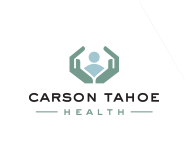Heat-related illness is on the rise in the U.S. In the warm season months of 2023, the Centers for Disease Control and Prevention found that emergency departments all over the country saw more cases of heat-related illness compared to previous years.
In some parts of the country, air conditioners weren’t considered necessary until recently, as heat waves occur more frequently across the U.S. Anyone without access to adequate air conditioning or funds for utility bills to keep them running is at risk for heat-related illness. Still, other specific risk groups, including pregnant women and older people, are at greater risk for heat-related illness. Keep an eye out for symptoms of heat-related illness. Learn the symptoms of heat-related illness and how to offer help when needed.
Heat Stroke
The most severe of all heat-related illnesses, heat stroke occurs when body heat rises past the point of being able to cool itself down, and body temperature can increase to 106 degrees Fahrenheit or higher in 15 minutes or less. Symptoms include:
- Confusion
- Heavy sweating or hot, dry skin
- Rapid heart rate
- Seizures
- Slurred speech
- Unconsciousness
- Very high body temperature
Heat stroke must be quickly addressed as it can lead to disability or death without treatment. If you suspect heat stroke, don’t hesitate to call 911. Move the person to a shady spot or indoors. Remove outer clothing and cool the person down with cold water or ice on the skin and a fan. You can soak clothing in cold water to cool them down until emergency medical services arrive.
Heat Exhaustion
When the body loses too much water and salt through excessive sweating in high heat, heat exhaustion can occur. Older people, people who work in the heat, or people who have high blood pressure, are most at risk. Symptoms of heat exhaustion include:
- Decreased urine output
- Dizziness or faintness
- Headache
- Increased body temperature
- Nausea
- Profuse sweating
- Restlessness
- Thirst
- Weakness
If you suspect heat exhaustion, move the person to a cool area and give them small, frequent sips of water or other cool liquid. Help them remove socks, shoes, and any other unnecessary clothing. Offer cold compresses or cold water to apply to the face and neck.
Heat Cramps
Heat cramps usually occur during strenuous, extremely sweaty activity in a hot environment due to the body’s loss of water and salt. Heat cramps are the mildest form of heat-related illness but may be the first signal of oncoming heat-related illness and must be treated immediately, or they can lead to stroke or heat exhaustion. Symptoms include painful muscle cramps and spasms, typically in the legs, arms, or trunk.
To treat heat cramps, first, get the person out of the heat and into the shade or a cooled indoor space. Carefully massage cramping muscles to help muscle spasms stop. Offer sips of cool water but refrain if the person is nauseous.
Sunburn
Though a summer sunburn may seem trivial, it damages the skin and can be severe. Sunburn symptoms often show up a few hours after time out in the sun and can include:
- Blistering
- Exhaustion
- Fever
- Headache
- Nausea
- Red, swollen skin that’s warm to the touch
To treat sunburn, you can use over-the-counter pain relievers such as acetaminophen and ibuprofen, apply a moisturizer that contains aloe vera, use cool cloths on the burned area, or take a cool bath. If blisters form, avoid popping them, and make sure to cover them with gauze as they heal and dry up.
Preventing Heat-Related Illness
You can help prevent heat-related illness with these simple steps:
- Check your local heat risk. Before spending time outdoors, consider how risky the heat level is in your area. If you have chronic lung or heart disease or other conditions, stay in an air-conditioned space if the heat index or air quality forecast indicates any danger.
- Ask for help. If you need financial assistance to purchase an air conditioner or keep the electricity on in your residence, there are government entities that can help.
- Hydrate. Stay hydrated and cool by drinking plenty of fluids such as water or electrolyte-replenishing sports drinks throughout the day.
- Seek shade. If you begin to feel too hot, get to a cool, shady spot and rest and rehydrate.
- Slather on sunscreen. Before heading outdoors, apply a broad-spectrum sunscreen with a sun protection factor of at least 30. Don’t forget to reapply after excessive sweating or swimming.
For more tips to protect your health this summer, schedule an appointment with a Carson Tahoe Health provider.







